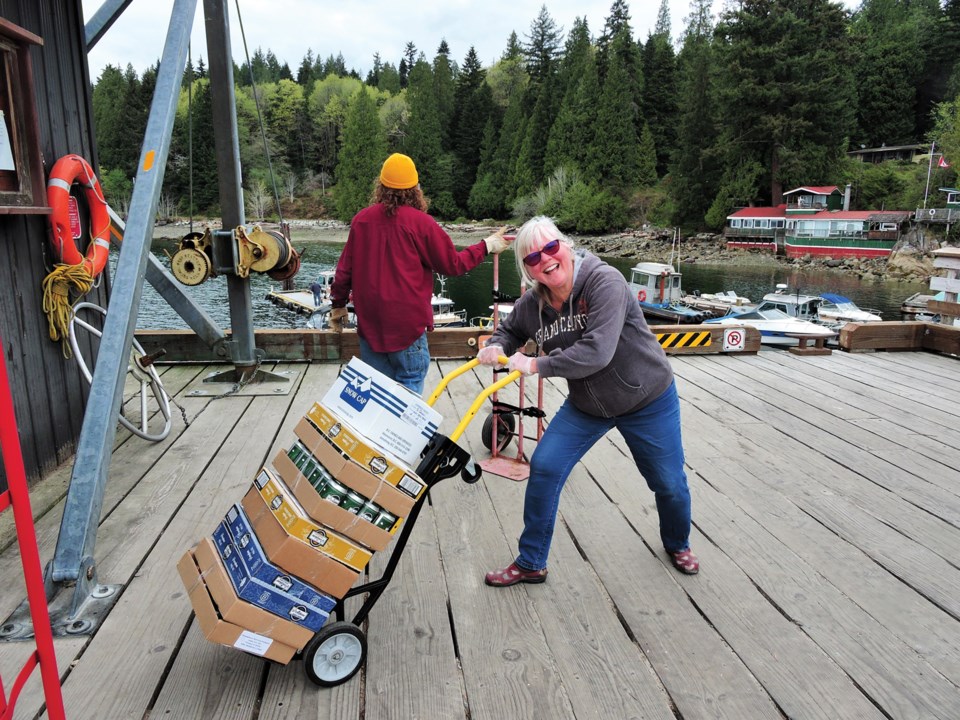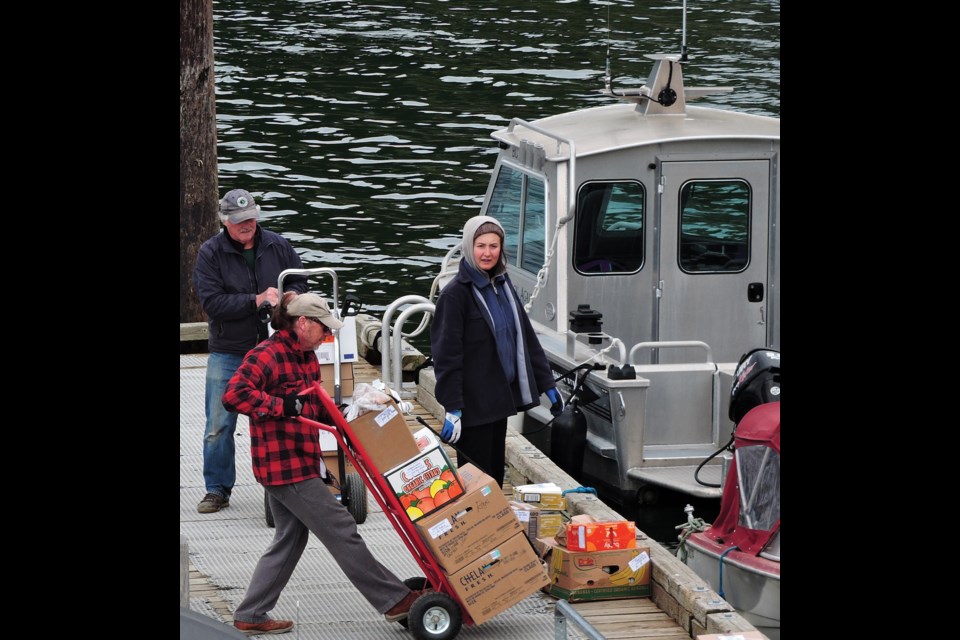For Leanne Bruce, supply chain management comes naturally – which has morphed into an unexpected bonus for the residents of the remote island of Gambier during the COVID-19 pandemic.
“I manage a band, so I’m used to moving people and goods around. It just all made sense,” Bruce told Coast Reporter.
Equipped with a spreadsheet and a revolving roster of volunteers, Bruce has been running an ad-hoc grocery supply chain for the island’s residents since physical distancing and other public health measures came into effect in mid-March.
Gambier Island has at least 125 full-time residents. It has a community centre, but no stores. It has roads, but no emergency vehicles. And unless one owns a boat, the only option for supplies is to cross Howe Sound on the Stormaway – a foot-passenger ferry linking nearby Gambier and Keats islands to the Sunshine Coast.
“A lot of the people that live here are seniors,” said Bruce. “The Stormaway is like taking the bus.”
To adhere to public health guidelines, the ferry has slashed how many walk-on passengers are allowed on the vessel – leaving islanders with the conundrum of how to safely and responsibly acquire essential goods from the mainland.
“We were trying to make sure we could keep the food chain going to the island. We were concerned we would lose the ability to travel safely,” Bruce said.
Unable to work at her regular job in the entertainment industry, Bruce channelled her logistics expertise into the creation of a spontaneous supply chain. Gibsons-based grocers IGA and SuperValu took up the challenge of filling orders and driving up to 30 boxes to a dock at the Langdale ferry terminal.

Also joining the effort are staff from Persephone Brewing Company, who deliver both groceries and beer to the dock, said Bruce, “because, you know, the important things.”
Volunteers then shuffle the boxes onto the Stormaway for the return trip to Gambier Island, where truck beds and car trunks await them. Deliveries are also made to the front doors of self-isolating neighbours.
“Literally people were crying the first week that we set this up,” said Bruce. “It’s been a real group effort.”
The effort also caught the attention of Keats Island residents, who depend on the Stormaway, too.
On the smaller island close enough to the Town of Gibsons to see its blinking lights, but without a grocery store of its own, retired English teacher Susan McLaren has been recruiting volunteers and organizing orders. “I’ve no experience in logistics. But I think that’s where it helps that we’re a little bit smaller than Gambier. It’s not so frightening.”
So far, the deliveries have continued at pace without a hitch, except for the odd box that’s ferried to the wrong island, but according to Bruce, “the Stormaway staff have been excellent in taking it back on and dropping it back off on the right island.”
Both Bruce and McLaren are hoping the deliveries outlive the virus – after all, this isn’t the first time groceries have been delivered to remote Howe Sound communities.
In the 1930s, when Gambier Island had a store, its owner would deliver goods by rowboat to shoreline homes. And in the 1940s, the Sannie Transportation Company ferried groceries to Bowen Island from the North Shore.
“In a way this whole lockdown and coronavirus trouble is making us find new ways of doing all sorts of things,” McLaren said.
One service that’s still lacking on Keats Island, however, is garbage pickup. “It’s very much not happening,” said McLaren. “Everyone is responsible for their own garbage.”
But that could become a Gambier import, too, since on that island another entertainment industry resident has been industrious with his free time by orchestrating the far less glamorous but also essential service.
“The main thing we’re all trying to do is just keep people from leaving the island,” said Paco Cauley. Normally residents pack out their own garbage to a designated bin at Langdale terminal. Not now.
The carpenter took it upon himself to complete the supply chain circle by collecting islanders’ refuse and lugging it back to the mainland in his own boat – up to 50 bags a week. And as with the groceries, the volunteers have flooded in to fill the gaps.
People drop their garbage down at the dock in the morning, while others drive through neighbourhoods to pick up from less mobile residents. Protective gear and a synchronized system prevent contamination. The only value exchanged is time.
Cauley is expecting to drop his side hustle once the film industry picks back up. Until then, he’s committed to the cause. “The community spirit has already been there, but it’s kind of when times get tough that you really see all the benefit.”



